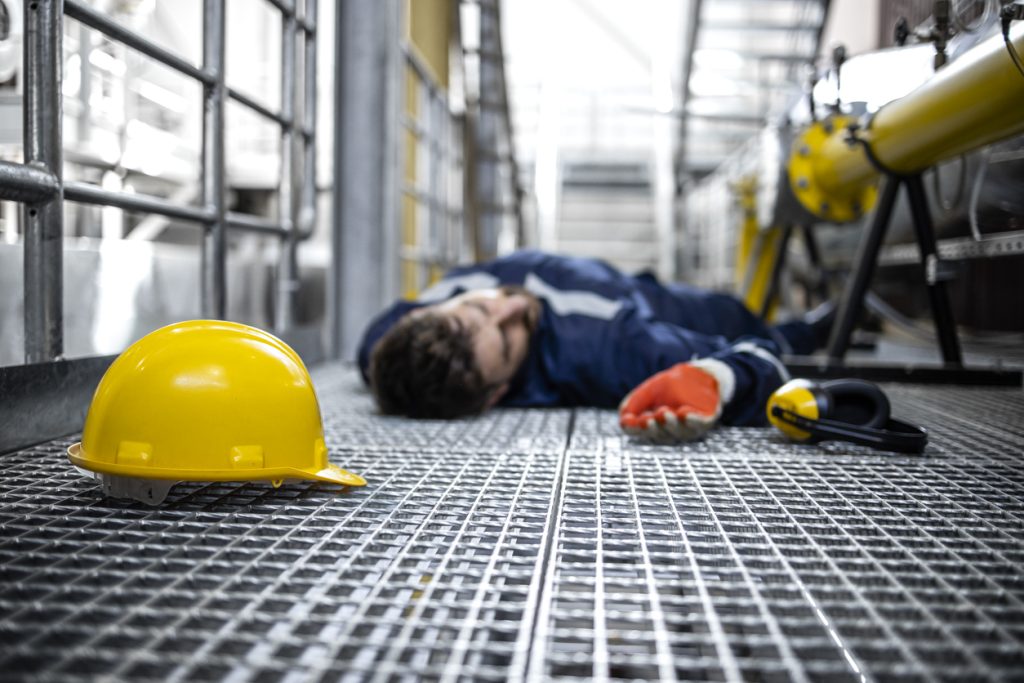The causes of workplace fatalities in the US are particularly significant within the manufacturing sector, which remains one of the country’s most hazardous industries. As industrial processes and heavy machinery define the environment, understanding the dangerous factors that lead to life-altering tragedies is crucial for employers, employees, and all stakeholders. This exploration delves into the most prevalent reasons behind fatal incidents, contextualized by safety statistics, legal standards, and best practices in risk reduction.
Understanding the Primary Causes of Workplace Fatalities in the US in Manufacturing
Within the high-risk terrain of manufacturing, the causes of workplace fatalities in the US are frequently linked to the physical demands and dangers inherent to this industry. These risks often tie back to a few well-documented, persistent hazards that challenge even robust safety programs.
Unintentional injuries, equipment malfunctions, exposure to toxic materials, and procedural lapses stand at the forefront of fatal incidents. Despite sweeping advances in safety protocols, the National Safety Council notes that the US manufacturing sector continues to account for a significant portion of workplace fatalities nationwide. Federal data reveals that among recordable work-related deaths, fatal injuries resulting from interaction with equipment or exposure to hazardous conditions are disproportionately represented in manufacturing environments.
Long-Tail Trends: Fatal Incidents and the Causes of Workplace Fatalities in the US
While every manufacturing process presents unique dangers, long-term OSHA and Bureau of Labor Statistics data underline recurring causes of workplace fatalities in the US. The prevailing sources of fatal injuries include:
Contact with objects or equipment is consistently flagged as a leading threat. Moving machine parts, cranes, conveyors, or forklifts often cause crushed limbs or lethal trauma. Working in proximity to heavy, energized equipment multiplies the potential for catastrophic accidents.
Falls, slips, and trips persist as a widespread challenge in manufacturing workplaces. Elevated platforms, scaffolding, ladders, and slick floors dramatically heighten the risk of fatal falls. Many cases involve both insufficient use of personal protection equipment and inadequate training.
Exposure to harmful substances or environments, such as toxic chemicals or oxygen-deficient atmospheres, also accounts for a measurable share of fatalities. Whether through acute poisoning or prolonged exposure, hazardous materials and gases take a severe toll on manufacturing personnel.
Transportation incidents occur typically where vehicle usage is integral to daily production. Forklifts, industrial trucks, and delivery vehicles are often implicated, with accidents occurring both within facilities and on adjacent worksites.
Fires and explosions, although less common, claim lives in circumstances involving volatile dust, flammable gases, and mismanaged hazardous waste.
Workplace violence, while not as prevalent as other causes, remains a concern in some settings where tensions or conflicts escalate unchecked.

Legal Standards Governing the Causes of Workplace Fatalities in the US
The Occupational Safety and Health Administration (OSHA) provides the statutory framework for addressing the causes of workplace fatalities in the US within manufacturing. These legal protocols require a comprehensive approach to hazard identification, risk communication, and the implementation of control measures.
For example, OSHA’s General Duty Clause mandates that every employer must furnish a workplace free from recognized hazards likely to cause death or serious harm. Additional standards are highly specific, targeting common dangers: lockout/tagout procedures address machine hazards, hazardous materials standards govern chemical risks, and fall protection rules are critical for any elevated work. Employers who fail to comply face penalties, civil liability, and in the event of fatality, criminal investigation.
Health and Safety Data: Patterns among the Causes of Workplace Fatalities in the US
Statistical insights show an unwavering reality: manufacturing remains among the top sectors for workplace deaths in the United States. According to OSHA’s annual reports and the Bureau of Labor Statistics Census of Fatal Occupational Injuries, tens of thousands of nonfatal industrial injuries occur every year, and hundreds of these result in fatalities.
In 2023, manufacturing fatalities accounted for a significant number of occupational deaths, with causes like struck-by incidents, caught-in/between incidents, and exposure to harmful substances leading the roster. The causes of workplace fatalities in the US included repeated issues tied to inadequate machine guarding, failed lockout/tagout procedures, improper chemical storage, and insufficient fall protection systems. Data also indicate a rising concern about opioid and substance misuse in industrial settings, which can impair judgment and elevate accidental death risk.
Analyzing Equipment-Related Causes of Workplace Fatalities in the US
Heavy machinery and equipment represent essential components of manufacturing, yet they are often at the center of tragic accidents. Machine entanglements, uncontrolled mechanical energy releases, and improper servicing account for a large portion of manufacturing fatalities.
For instance, manufacturing machinery is typically supplied with safety guards, but failure to install or maintain these barriers has resulted in high-profile deaths. The necessity of strict lockout/tagout procedures becomes apparent in cases where workers sustain fatal injuries during maintenance activities, highlighting a core cause of workplace fatalities in the US: exposure to hazardous energy without protective measures.

Chemical Hazards as Leading Causes of Workplace Fatalities in the US Manufacturing Sector
Chemical manufacturing and allied industries routinely handle potent toxins, reactive agents, and combustible materials. Inhalation of toxic vapors, accidental ingestion, or severe burns following chemical explosions are among the most common causes of workplace fatalities in the US in this domain.
OSHA’s Hazard Communication Standard places a legal obligation on employers to provide clear labeling, accessible safety data sheets, and comprehensive worker training. Even with rigorous protocols, lapses occur—sometimes during emergency responses, other times due to underestimating residue hazards or failing to use proper personal protective gear.
The Role of Falls and Elevated Work in Manufacturing Fatalities
Manufacturing facilities often feature high platforms and complex infrastructure, necessitating elevated work. Falls from scaffolding or catwalks continue to be a principal cause of workplace fatalities in the US, especially where guardrails and harness systems are neglected.
Studies from the National Institute for Occupational Safety and Health (NIOSH) indicate that maintenance workers, equipment installers, and inspectors face disproportionate risk. The predominance of falls underscores the importance of continuous training and regular inspection of protective systems.
Fatal Transportation-Related Incidents in Manufacturing
Though manufacturing is typically associated with fixed plant environments, a significant number of fatalities stem from transportation incidents involving powered vehicles. Forklifts, powered industrial trucks, and even private vehicles used for job duties have contributed to a steady stream of fatal cases.
Common patterns include improper operation, inadequate training, insufficient barrier systems, and lack of spotters when reversing or maneuvering in congested areas. Such occurrences magnify the need for proactive fleet safety programs.
Burns, Fires, and Explosions among the Causes of Workplace Fatalities in the US
Combustible dust, flammable liquids, and reactive chemicals make manufacturing sites susceptible to fires and explosions. OSHA’s Process Safety Management standard is specifically designed to control and mitigate these risks, requiring detailed hazardous process reviews, equipment integrity programs, and comprehensive emergency response planning.
Despite these legal requirements, fires and explosions remain responsible for select, but especially violent, fatalities. Improper hot work, neglected dust buildup in confined spaces, and failure to monitor static electricity are regularly cited as contributing factors.

Workplace Violence: Less Common but Lethal
While rare compared to other dangers, homicide and violent aggression remain present in the manufacturing context. The Bureau of Labor Statistics documents a subset of deaths caused by co-worker altercations, robberies, or domestic disputes brought on-site.
Companies are increasingly required to implement violence prevention and conflict management policies as part of wider safety programs addressing all causes of workplace fatalities in the US.
The Legal Implications Surrounding the Causes of Workplace Fatalities in the US
Legal ramifications following manufacturing workplace deaths can be profound. Beyond OSHA fines, surviving family members may pursue wrongful death litigation, and, under specific circumstances, criminal charges may be filed against responsible parties. Courts examine whether employers fulfilled “duty of care” based on OSHA standards, historical injury reports, and the foreseeability of the hazard in question.
The OSHA Worker Fatality Investigation summary catalogues worksite deaths and resolution, providing transparent data on legal findings and corrective measures adopted post-incident.
Reducing the Causes of Workplace Fatalities in the US: Prevention, Training, and Technology
Mitigating the causes of workplace fatalities in the US requires permeating every level of manufacturing operations—from strategic risk assessment in the boardroom to hands-on training on the shop floor.
Preventative steps include routine safety audits, proactive equipment maintenance, robust lockout/tagout practices, thorough chemical labeling, and ongoing fall protection reinforcement. Technology is enhancing safety through machine automation, real-time hazard monitoring, and digital incident tracking platforms.
Investing in these measures is not just a regulatory obligation but a shared moral and economic imperative to reduce loss and safeguard manufacturing’s workforce.
Summary of the Key Causes of Workplace Fatalities in the US in Manufacturing
The causes of workplace fatalities in the US manufacturing industry revolve around interaction with dangerous equipment, exposure to chemicals, falls from heights, transportation incidents, accidental fires and explosions, and occasional workplace violence. Legal standards demand a multi-faceted approach to risk management, each rooted in statutory requirements and industry best practices.
Data from credible sources continually underscore the need for a persistent focus on hazard elimination and total workforce education. Manufacturing professionals and employers alike must internalize the lessons from reported incidents, legal precedents, and government investigations to ensure a safer environment for all.
For a deeper breakdown of specific risks and regulatory standards, readers can consult the comprehensive OSHA analysis, which serves as a definitive government repository for workplace fatality investigations.
Discussion of prevention and legal context for each category of fatal incident can also be explored in this detailed overview of the leading causes of workplace fatalities in the US, providing meaningful legal and safety insights for anyone navigating the complex environment of American manufacturing workplaces.
In closing, an unwavering commitment to identifying the causes of workplace fatalities in the US—and rigorously mitigating them—is indispensable for the sustainability and safety of the manufacturing sector. This commitment not only aligns with government regulations but is pivotal in upholding the well-being and dignity of every worker.
